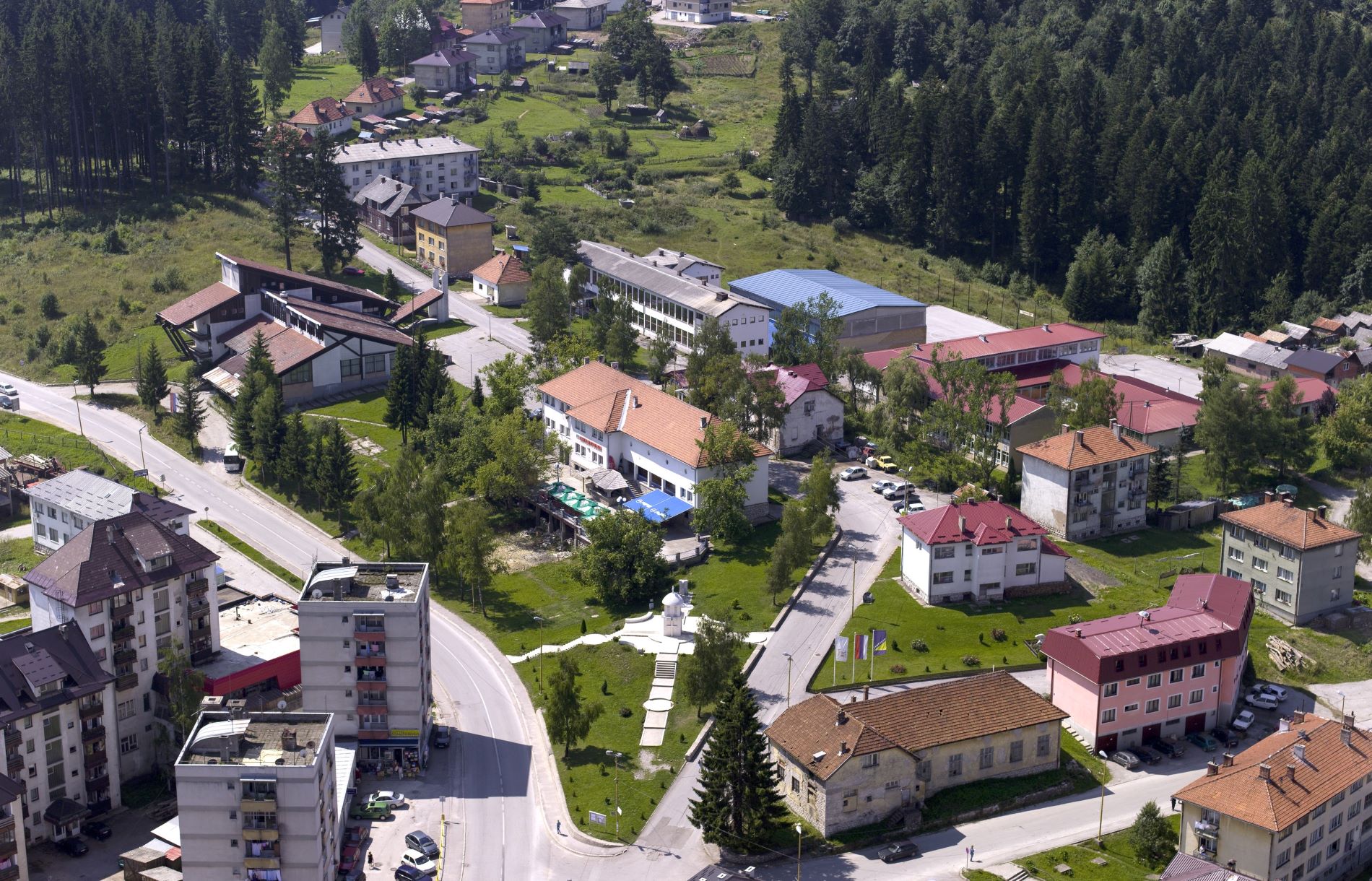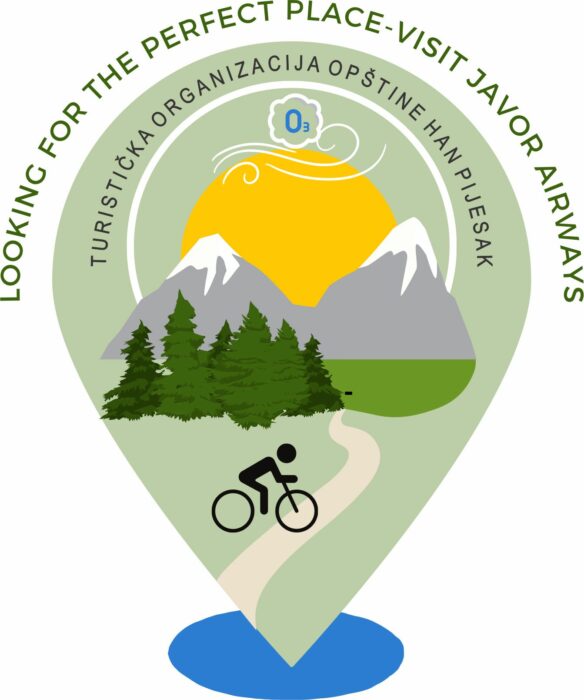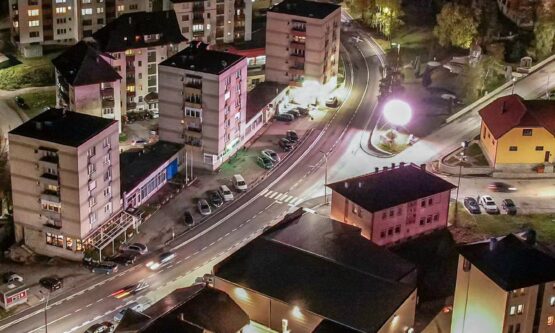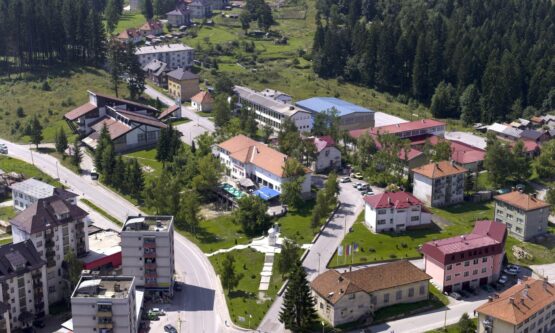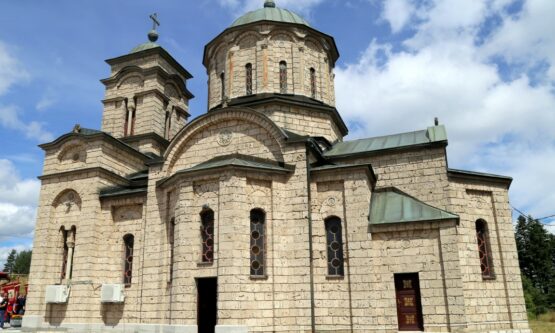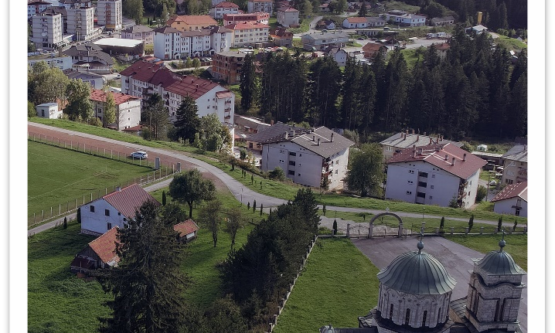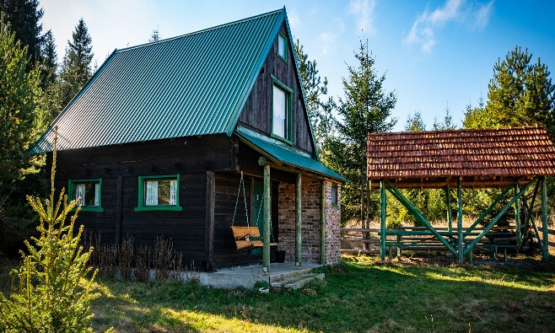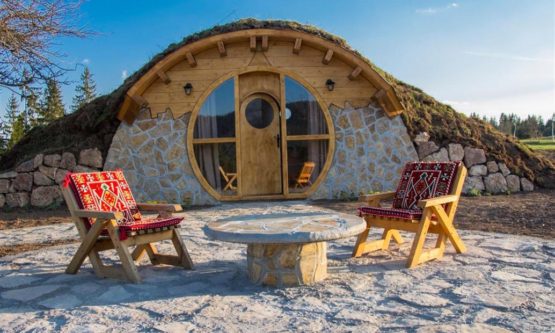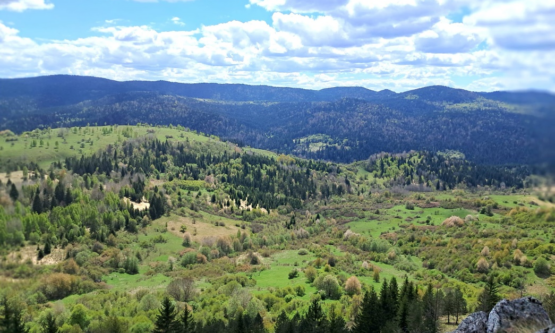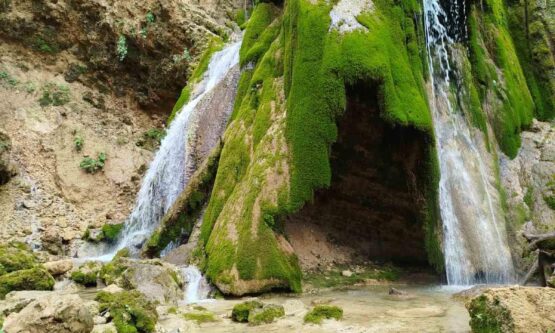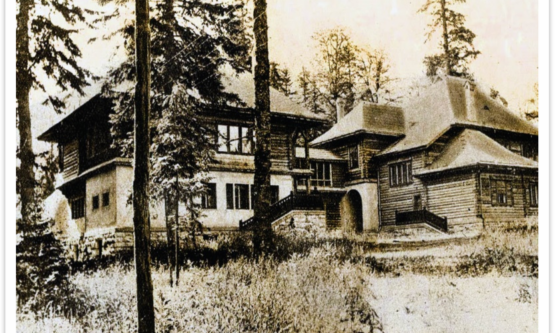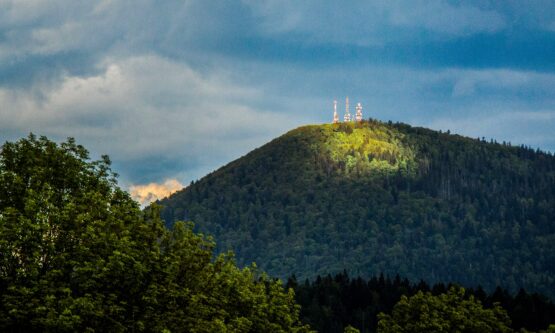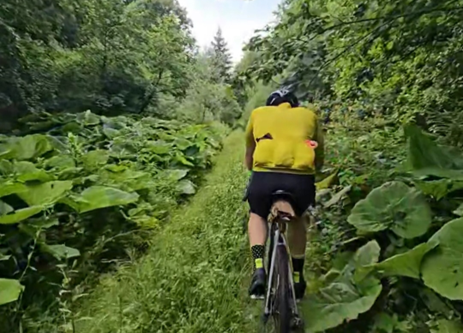Welcome to Han Pijesak
Han Pijesak is surrounded by the following peaks – Veliki Zep (1537m), Javoranik (1219m), Studena Gora (1149m) and Tresnjevac (124m). The town itself is situated at an altitude of 1100 meters, making it the highest-elevated settlement in the Republic of Srpska. Its abundant coniferous and deciduous forests have contributed to its reputation as a renowned climatic and air resort. Recognized for its ozone-rich air, Han Pijesak officially earned the designation of a in early clean air resort in November 2023.
Culture

The Center for Culture and Sports “Pogled” has two facilities of significant cultural value, including a cinema adapted for small-stage performances with a capacity of 250 seats and a sports hall suitable for competitions in small-scale sports. Additionally, the center houses a local heritage gallery showcasing periodic exhibitions, along with collections of old photographs, newspaper articles, postcards and antique objects from the Han Pijesak area.
The municipality is home to numerous protected sites of natural beauty with recreational, cultural and scientific significance. These include medieval landmarks such as the fortified old town of Posijak (built in the 11th and 12th centuries near Pjenovac) and the settlements of Mackovac and Maceha. It also hosts ten locations containing a total of 176 medieval Stecak tombstones, old Muslim cemeteries at Podzeplje and Nevacka Brda, a historic Serbian cemetery in Mrkalji, three cemeteries of Serbian soldiers from World War I (Igrista, Ruzina Voda and Vrani Kamen), and the grave of Jovan Tandaric in Supovina.
Architectural and ambient structures from the Austro-Hungarian period and the Kingdom of Yugoslavia, as well as numerous monuments from the National Liberation War add to the historical significance of Han Pijesak. Particularly noteworthy is the Ossuary on Boracko hill, housing sculptural monuments commemorating 256 fallen fighters, along with various memorial plaques and busts in Han Pijesak and Pjenovac.
Among the national treasures are the Stecak necropolises at Pokaјnica (Mramorje) and Podgrobje (Luka) in the village of Nevacka, comprising 37 medieval tombstones which are declared as national monuments of Bosnia and Herzegovina.
The public library “Branko Cucak” preserves furniture from the summer residence of King Aleksandar Karadjordjevic, as well as a rich collection of documentation, photographs and newspapers from the period when members of the Karadjordjevic dynasty visited Han Pijesak.
This institution cherishes the legacy of the National Library and Reading Room, established in May 1923. With a rich tradition of engaging with its users, hosting literary promotions, workshops, exhibitions and internationally recognized events, the “Branko Cucak” Library has been a cultural cornerstone. It was named the best library in the Republic of Srpska for 2022. Among its noteworthy initiatives is the “Cucak’s Literary Encounters” event, which celebrates prominent figures and milestones in literature, culture and history.
Nature
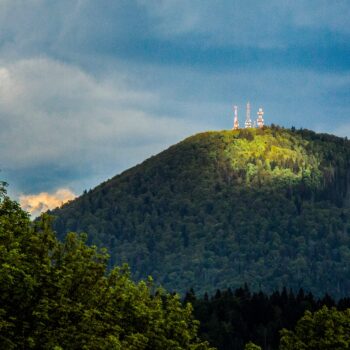
The municipality of Han Pijesak is surrounded by the towering peaks of Veliki Zep (1537m), Javoranik (1219m), Studena Gora (1149m) and Tresnjevac (124m). Situated within the inner Dinarides, it has a mountainous terrain with elevations predominantly above 1000 meters, resulting in a healthy mountain climate. This unique geography, coupled with thick coniferous and deciduous forests has earned Han Pijesak a reputation of a renowned air and climate resort, particularly notable for its ozone levels which are among the highest in Europe.
The area’s natural heritage includes remarkable landmarks such as the White birch (betula pubescus) at Kramske Bare, the green Douglas fir (pseudotsuga menziesii) at the Gornji Ljeskovac and the Pancic spruce in the royal complex of King Aleksandar Karadjordjevic.
Adventure
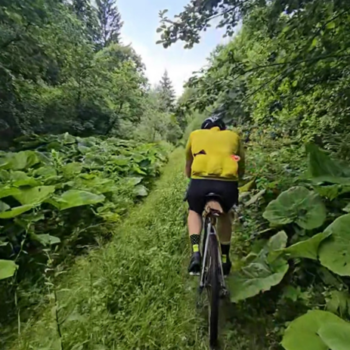
Han Pijesak offers extensive opportunities for hiking, with trails of varying lengths that meander through scenic landscapes and culminate at breathtaking viewpoints. Local hiking clubs here are “Visocnik” and “Javor-Suncana Planina”.
Climb on Veliki Zep, the highest peak in the municipality and the Javor mountain range which stands at 1537 meters and offers a dominating view of the surroundings. Another highlight is the Zezavica viewpoint, famous for its panoramic vistas.
For cycling lovers, Han Pijesak offers a dense network of paved and macadam roads, providing an unforgettable experience of exploring unspoiled nature. These routes travel along picturesque landscapes, forest trails and expansive meadows, blending adventure with the serenity of natural beauty and the region’s rich historical legacy.
Han Pijesak has enriched its offerings for hikers, nature lovers and mountain biking lovers with a functional rest area designed for cyclists. This facility includes an integrated solar system for charging mobile devices, a bench with a canopy, bike parking rack and a repair station equipped with essential tools.
Gastro
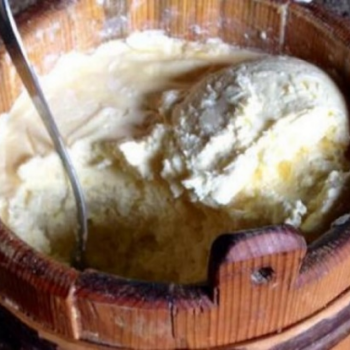
Nestled in untouched nature, less than two kilometers from the Han Pijesak-Karaula road lies the location where the renowned “Romanija kajmak” is produced. This delicacy, which is protected in 29 countries is crafted using a unique local technique passed down through generations, a process that includes smoking as a key step in its production.
Skakavac Waterfall

The Skakavac Waterfall located in the village of Zeravice near Han Pijesak is a rare natural attraction. Together with the canyon of the Varosnica river which stretches for four kilometers and includes two significant springs in the Varosnica area, it creates a unique experience. Skakavac stream flows into Varosnica and covers only 600 meters but has an elevation drop of over 200 meters. This picturesque waterfall, formed from travertine and sinter resembles a canopy and is a striking example of fluvial erosion.
Zezenica Viewpoint
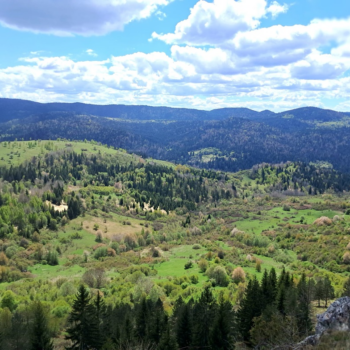
Zezenica Viewpoint is a marked exposed rock above the village of Karaula. Known also as Kraljevaca, it marks the end of a ridge extending from Jasen through Vrani Kamen and beyond Veliki Zep. The viewpoint, accessible via hiking trail with an easy 15-minute ascent, provides breathtaking vistas of the Birac region. Suitable for barbecuing and relaxation, Zezenica is a perfect spot for resting and enjoying the view.
Mountain camp Badger’s hole – Hobbit House
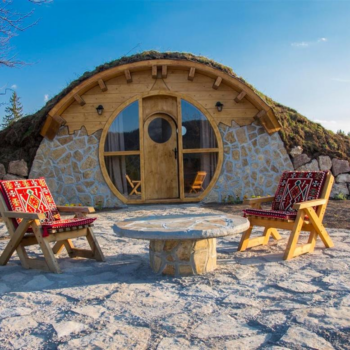
The mountain camp “Badger’s Hole” is located in the village of Malo Polje, about 12km from Han Pijesak, nestled below the mountain peak Igrista. The camp offers a variety of activities depending on the season and the preferences of visitors. Guests can enjoy skiing, pleasant climate and nearly unspoiled nature, as well as paintball games, panoramic rides in off-road vehicles, hiking and trekking through the vast pine forests.
This camp provides a unique experience of staying in beautiful natural surroundings, with a particularly attractive feature being the Hobbiton-style house that draws many visitors. The area is ideal for hiking, skiing, and cycling, and the “Mountain Bungalows and Hobbit House – Badger’s Hole” facility includes the option of purchasing ski passes.
The Mountaineering Association “Javor – Suncana Planina” from Han Pijesak has constructed a mountain cabin in the village of Kusace, 6.5km from Han Pijesak, amidst unspoiled nature.
Mountain cabin
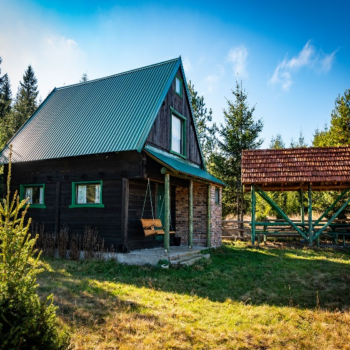
The mountain cabin offers accommodations in a fairy-tale surrounding, complemented by various hiking tours in summer and snowshoeing in winter. Activities range from ascents to the summit of Javor, Veliki Zep at 1537 meters, to excursions to the Drina canyon with its stunning viewpoints, as well as visits to historic sites like the renowned Zepa bridge or the Serbian military cemetery at Vrani Kamen from World War I. The area also offers cycling and MTB tours.
The Church of the Great Martyr Pantaleon

The original church in Han Pijesak was built in 1923 and was personally sponsored by King Aleksandar I Karadjordjevic, who frequently stayed at his residence in Han Pijesak. This church was located near the current one, close to the monument and ossuary for the fallen fighters of World War II. The original church was bombed by airplanes in 1942, leaving only three preserved bells, one of which was a gift from King Alexander. The archives were also destroyed in the bombing.
Construction of a new single-nave church began in 1972, with the foundation consecrated by episcope Longin of Zvornik-Tuzla. The new church, measuring 17.99 by 12.72 meters was built from limestone and covered with copper. Its construction was completed in 1979.


